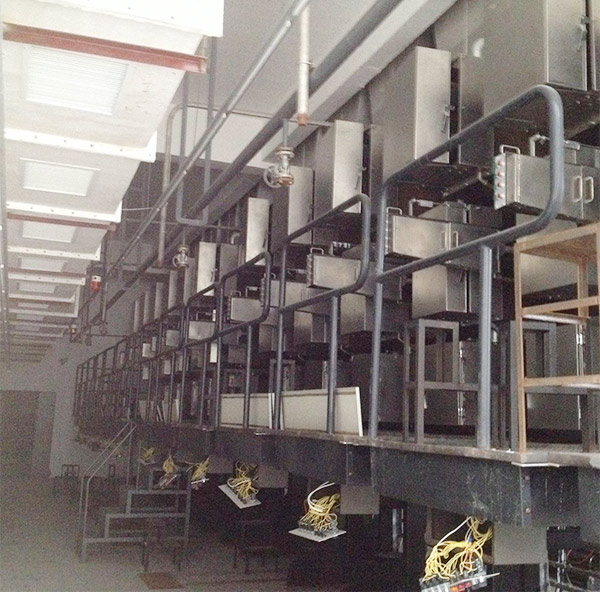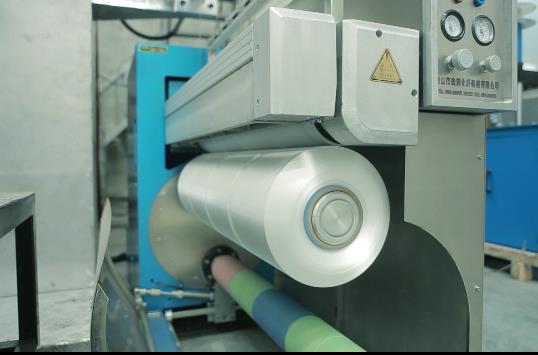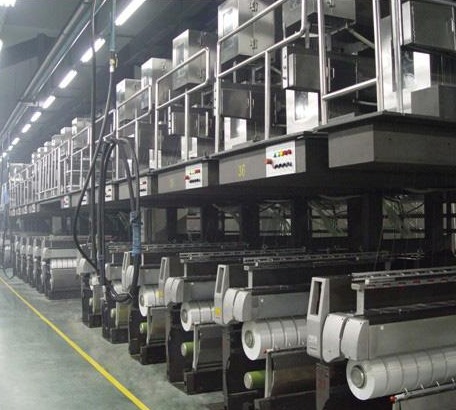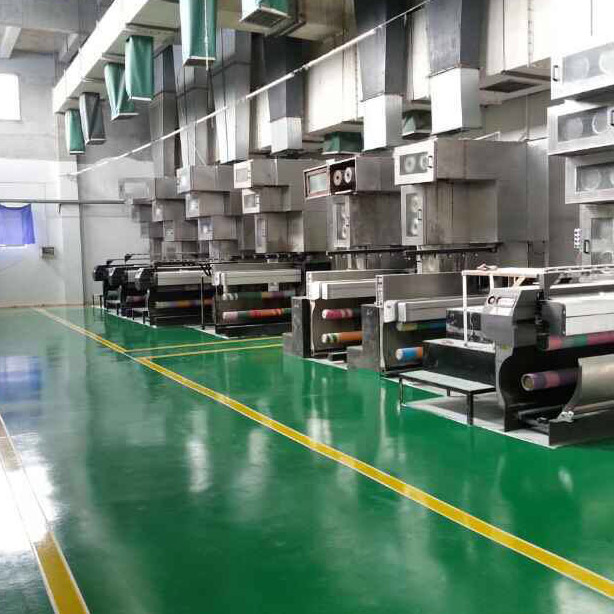- Polypropylene spinning machine
- Polypropylene FDY equipment
- Polyester POY spinning machine
- Polyamide FDY common and high strength equipment
- Polyester FDY equipment
- Polyester high strength equipment
- polyester、Polyamide、 Polypropylene BCF equipment
- Small spinning machine
- All kinds of spinning special parts
- 立冬至,问冬安|富邦化纤机械以匠心蓄能,愿你冬来皆安,岁岁无忧!
- The National Alliance of Model Workers and Skilled Craftsmen Innovation Studios in the Textile Industry was established
- Polypropylene FDY Spinning Machine: Technical Features and Application Fields
- On the Chongyang Festival, we respect the elderly and pass on warmth. Fubang Machinery wishes all our respected elders to bloom like ancient maple leaves and brave the frost like late chrysanthemums!
- The professional attire supply and demand matching conference builds a platform for industrial cooperation
- The polypropylene spinning machine is the core equipment driving industrial upgrading

- Contact:Mr. Huang Guofu
- Cel:0086-13901505556
- Fax:0086-519-83341119
- Email:czfb5556@126.com
- Add:No. 288-8 ChangLi Rd, Huangli Town, Changzhou, JS PRV.
Textile Focus
Recently, the long-lost good news finally came from the market that was delayed by the epidemic. With the issuance of the "Notice on Effectively Doing a Good Job in Freight Logistics" on April 11, the State Council has gradually achieved results in the past two days. According to reports, logistics and transportation in Haining, Puyuan, Jinjiang and other places also showed a great improvement.
01 Raw material procurement and weaving orders may be better than the previous period
It was understood earlier that, affected by the epidemic, textile enterprises generally reported that many orders were forced to cancel in the early stage, and raw materials could not come in. Now that the logistics is getting better, can the time and orders delayed by the epidemic be able to come back?
It is understood that in the early stage, more than 10 provinces and cities including Jiangsu, Zhejiang, Guangdong, Shandong, and Hebei closed some highway entrances and exits and toll stations due to epidemic prevention and control. Even some normally open highway entrances have set heavy restrictions on truck drivers. A large number of drivers are unable to get off the expressway due to the itinerary code with stars or foreign license plates (the nucleic acid detection capability at the intersection is seriously insufficient), resulting in a sharp increase of nearly 30% in transportation costs.
The increase in freight costs has increased the procurement costs of textile enterprises. In addition, due to the still severe epidemic situation, strict epidemic control and poor logistics, raw materials for some downstream weaving factories have begun to be in short supply, resulting in the production enthusiasm of small and medium-sized spinning mills and weaving enterprises. rising. Some institutions and traders said that the actual operating rate of weaving enterprises in the Yangtze River Delta region may have dropped to below 60%, which has caused the passive replenishment of raw materials by enterprises to continue to be delayed.
In general, the gradual smoothness of logistics and transportation will greatly ease the market supply chain and the placement of midstream orders due to shortage of raw materials. It is difficult to obtain large-scale raw material procurement and weaving orders.
02Domestic trade demand has spread from the terminal to the upstream
Although logistics has a great impact on the transportation of domestic textile orders in the short term, more importantly, the domestic trade demand under the "return" of the epidemic has spread from the terminal to the upstream. Clothing markets such as French Textile City, Trade Shoes Clothing City, Jiutian Huanbei Clothing City, Sijiqing Clothing and Clothing Market (Men's Clothing Center) and other clothing markets have disappeared.
The wholesale market missed the prime sales time from April to June, and the stock of spring models is seriously overstocked. If the epidemic cannot be controlled as soon as possible, it will be difficult to support. Especially in the wholesale market with spring and summer as the main sales season, the rent of stalls is expensive and the capital chain is insufficient. It will continue to affect purchasing and sales in autumn and winter and even survival. From the perspective of seasonal factors, the procurement of raw materials may not follow the seasonality, but the seasonality of the clothing market is very obvious. It is no exaggeration to say that the spring orders in the clothing market have become inventory, and the corresponding spring orders may have been shelved. By next year.
Not just the epidemic factor, the textile foreign trade market this year is also facing heavy resistance! From the perspective of this year's textile market, the lack of profitable new export orders is the root cause.
Affected by the epidemic, the global apparel industry has been impacted. Not only physical apparel retailing has been hit hard, but online apparel retailing has also suffered great losses due to logistics and other reasons. Whether it is an international luxury brand clothing or a fast fashion brand, they are all in trouble, and companies use various tricks to save themselves. The bigger impact may be in the reverse flow of orders. In a series of interviews tracking the phenomenon of "order return" in 2021, many merchants told reporters that "orders do return", "the number of inquiries and goods received". All have increased, and some garment manufacturers have even placed their orders until 2022."
Will the company still receive these return orders in 2022? Some people in the industry expressed "cautiously optimistic". "The competition is still very fierce. According to the fabric factories we asked around, they said that a lot of fabrics have already been sent to Southeast Asia, and the phenomenon of returning may not be as obvious as in 2021." In recent years, with the trend of industry relocation to Southeast Asia, The number of textile and garment enterprises in my country has been declining year by year. Due to the lack of competitiveness and poor anti-risk ability of small and medium-sized textile and garment enterprises, there are signs of gradual elimination. The epidemic has catalyzed and accelerated the speed of industry concentration.
The actual situation is also the same. According to statistics from the General Administration of Statistics of Vietnam, the export value of Vietnam's goods in the first two months of 2022 will reach 53.79 billion US dollars, an increase of 10.2% over the same period in 2021. A total of 9 categories of commodities exported over 1 billion US dollars, accounting for 71.6% of the total export value. It is understood that orders for many local textile enterprises have even been placed in the third quarter of this year.
03The domestic textile market demand continues to shrink
According to the backward deduction, there will be two phenomena in the middle and lower reaches. First, the domestic epidemic situation is still difficult to control in May, and the terminal demand is still sluggish and the orders are still difficult to improve, so the middle and lower reaches enterprises are forced to continue to reduce the operating rate and stop production, in order to save Survival strength. Second, the domestic epidemic situation was fully controlled, production liquidity recovered under the guidance of the national stimulus policy, and the domestic low raw material inventory level ushered in replenishment, which led to an improvement in the upstream sales turnover rate and price stabilization.
Judging from the current situation, the epidemic has caused the domestic textile market demand to continue to shrink, and the recovery period has been delayed. In addition, affected by geopolitical conflicts, the international environment is complex, and the future situation is uncertain, which has brought unpredictable effects to the textile and garment industry. Since the beginning of this year, many textile workers have faced cash pressure, shrinking market, environmental supervision, and urgent need for transformation; especially the impact of the epidemic has made it even worse for enterprises!
04When will the cotton price inflection point come?
USDA's April monthly report raised global cotton supplies, cut cotton exports from India and Brazil, and lowered China's consumption. The overall report is bearish, and ICE cotton prices recently dropped from 140 cents/lb to around 133 cents/lb.
According to the report, although neither Russia nor Ukraine is an important producer or consumer of cotton lint, the annual imports of cotton textile products (clothing, towels, bed sheets, etc.) in the two countries are worth about $3 billion and $500 million, respectively. The conflict between Russia and Ukraine may slow down consumer demand in both countries, thereby reducing consumption by major suppliers including Bangladesh, China and Turkey. At the same time, global inflation has risen further as fuel and electricity prices have risen sharply. High logistics costs and serious congestion of shipping channels make the transportation of cotton raw materials and textile products more complicated.
Although the price of US cotton has shown a strong upward trend recently due to strong demand, and cotton farmers are enthusiastic about planting cotton, but due to the conflict between Russia and Ukraine, global grain prices have risen sharply. Since 2022, the main US corn futures contract has risen by 28%. And oilseed prices also rose in varying degrees, and the price advantage of cotton and grain declined slightly. In addition, because the export volume of potash fertilizer from Russia and Belarus accounts for about 40% of the global potash fertilizer export volume, currently affected by conflicts, especially Western sanctions, Russia has banned the export of related products to the list of unfriendly countries, which has pushed up the world's potash fertilizer market. price. Right now is a critical period for farmers to prepare for spring ploughing. The demand for chemical fertilizers has increased sharply, resulting in an imbalance between supply and demand in the fertilizer market. Coupled with factors such as rising energy prices, fertilizer prices continue to rise. According to market research, the planting cost of cotton in the new year has risen by about 35% compared with the previous year, while the planting cost of corn, a competitive cash crop, has risen by about 26% in the new year. In the context of the excessive increase in cotton planting costs and the fall in cotton price relative to grain prices, the increase in the area of new cotton sown may not be as expected.
Disclaimer: This article is organized from the Internet, and the copyright belongs to the original author; if there is any infringement, please inform in time, and delete it after verification.
- 立冬至,问冬安|富邦化纤机械以匠心蓄能,愿你冬来皆安,岁岁无忧!
- The National Alliance of Model Workers and Skilled Craftsmen Innovation Studios in the Tex
- Polypropylene FDY Spinning Machine: Technical Features and Application Fields
- On the Chongyang Festival, we respect the elderly and pass on warmth. Fubang Machinery wis
- The professional attire supply and demand matching conference builds a platform for indust
- The polypropylene spinning machine is the core equipment driving industrial upgrading
- Management Skills: Unlock New Management Efficiency! Six core strategies to break through
- The 2025 International Advanced Fiber Materials Innovation Conference was held in Shengze
- Polypropylene spinning machine is a key link in the production of synthetic fibers
- When Xiang embroidery meets cheongsam, the two intangible cultural heritages join hands, a




